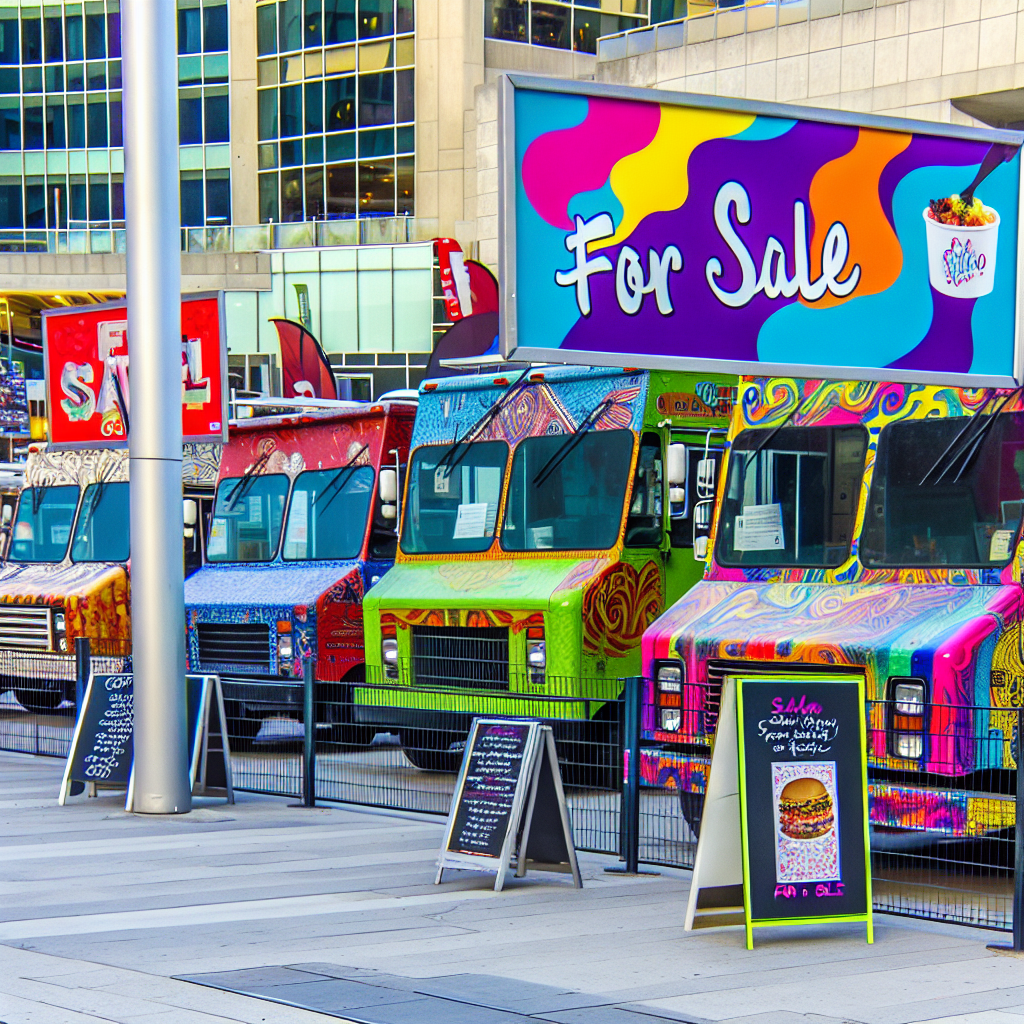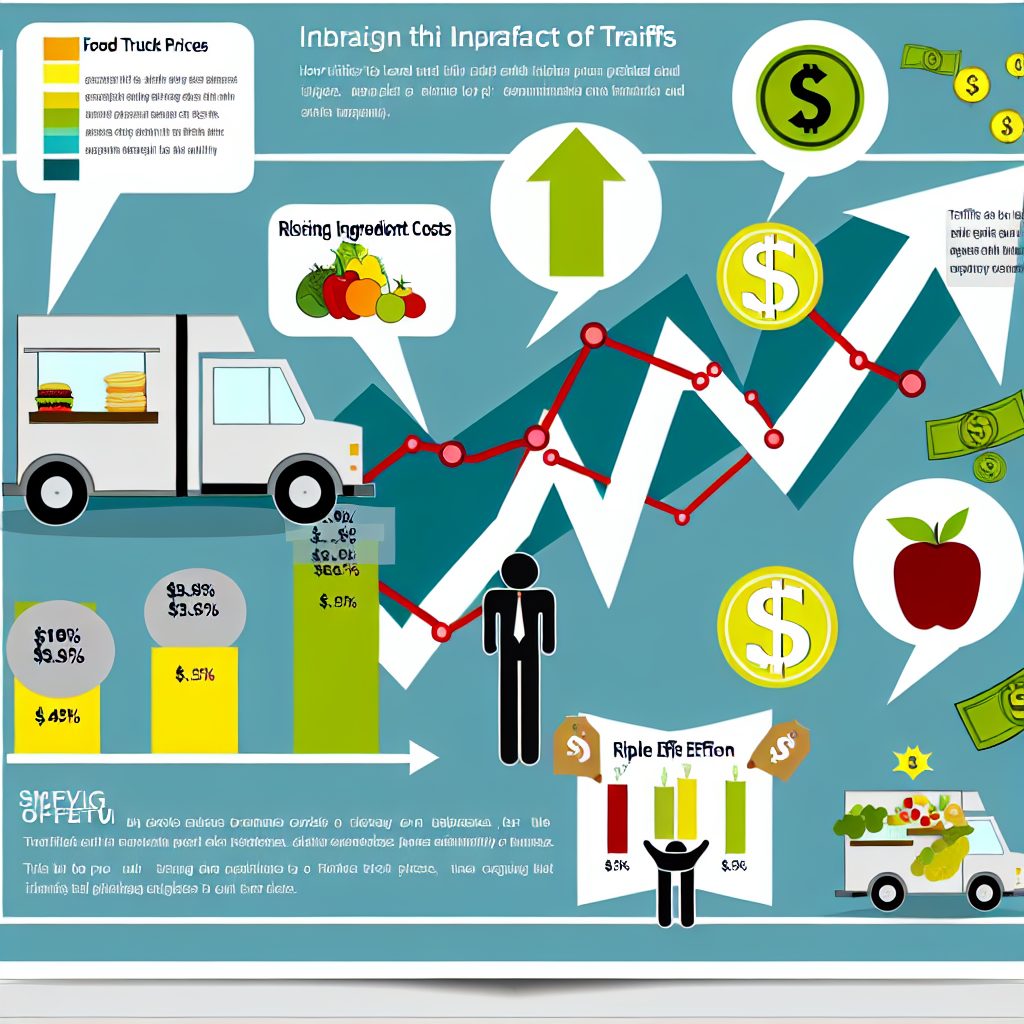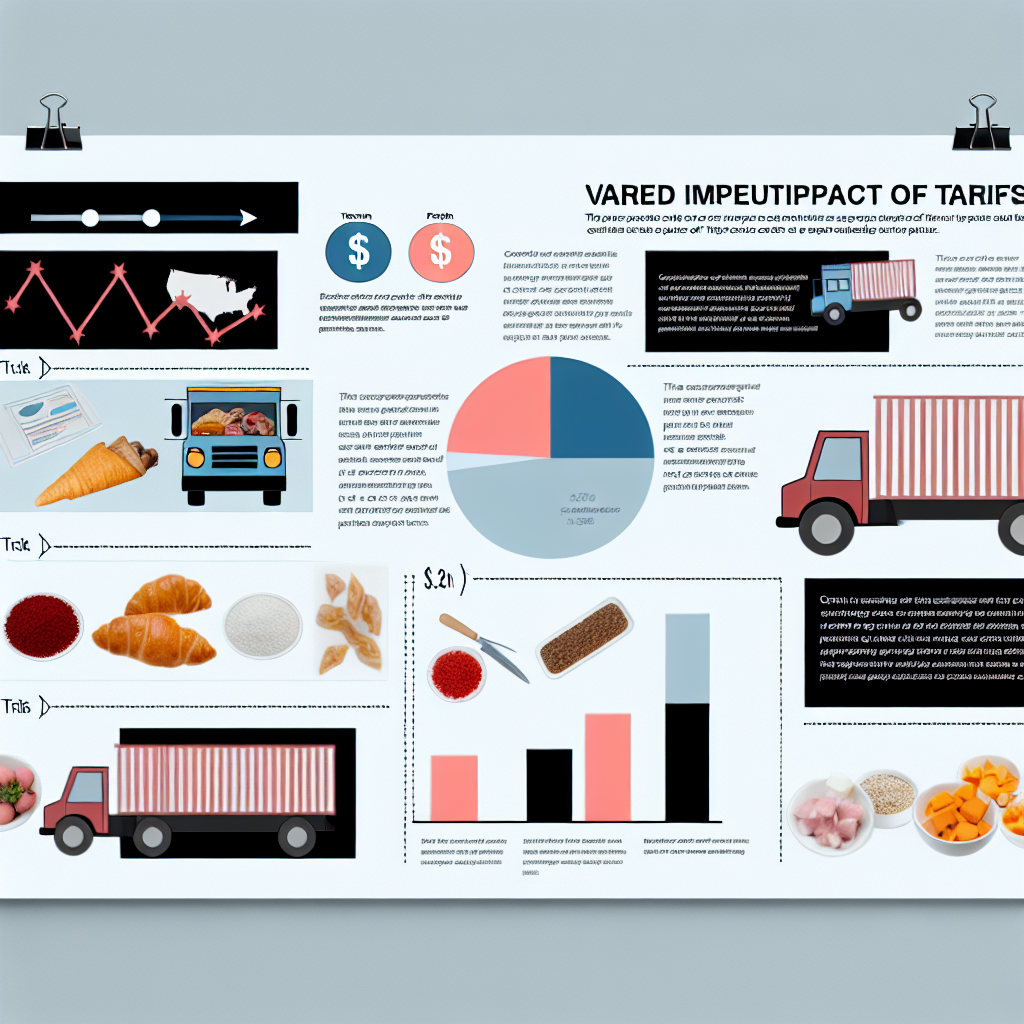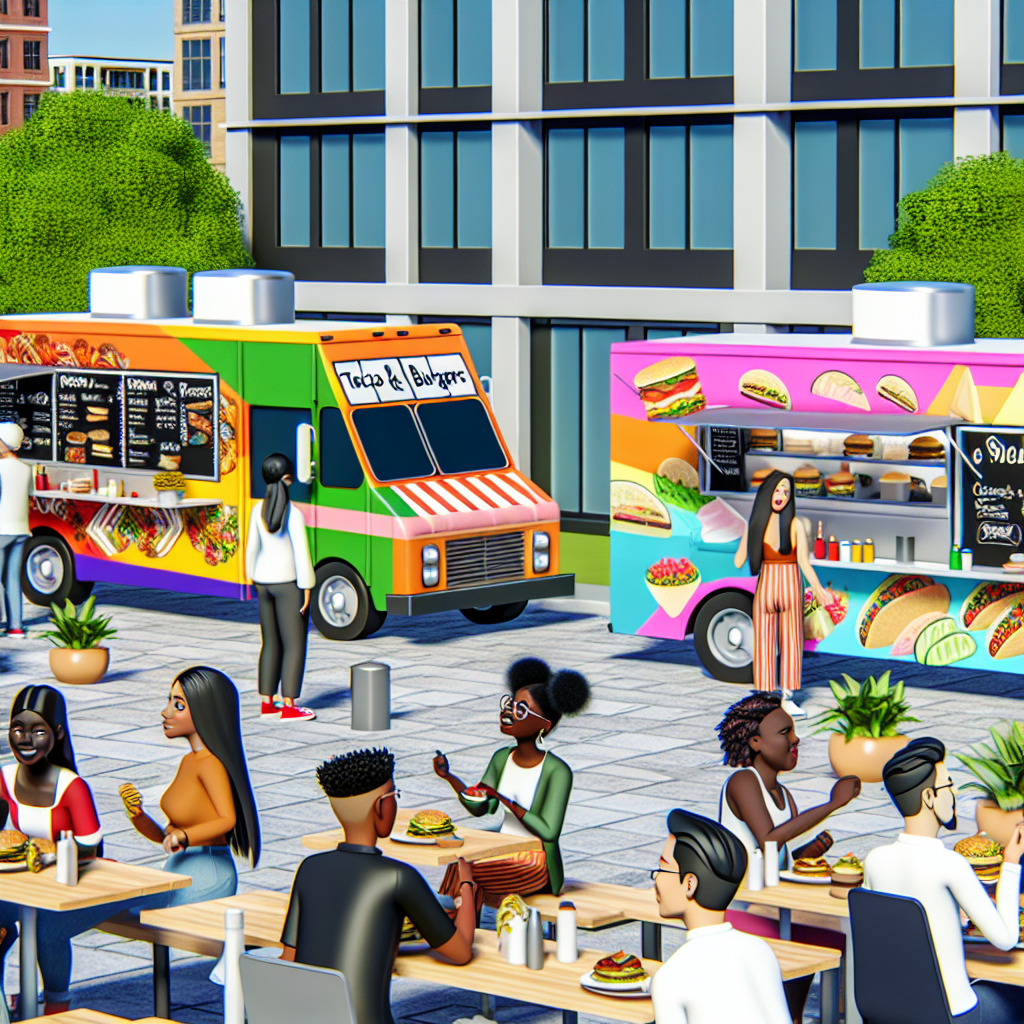In recent years, the landscape of the food truck industry has been increasingly influenced by governmental policies, particularly tariffs. The recent announcement of a 25% tariff on heavy trucks, as declared by President Trump, marks a significant change in the cost dynamics of this sector. This policy, effective from October 1, 2025, aims to bolster U.S. manufacturers by imposing heightened costs on imported trucks. While the intentions behind this tariff may be to protect domestic heavy truck manufacturers like Mack and Volvo, the unintended consequences for food truck businesses are serious and multifaceted.
For food truck owners, who primarily rely on heavy trucks for their operations, the increased costs from this tariff can significantly alter their budget and overall profitability. These operators often utilize imported trucks for their advanced technology and features that may not be available in domestic models. The sudden increase in procurement costs can strain their financial resources, making it challenging to sustain their operations without passing some of these costs onto consumers.
Moreover, the tariff on heavy trucks complicates supply chains, creating potential delays and additional expenses for food truck businesses. The ramifications are not limited to the direct costs of the trucks but extend to operational logistics, maintenance, and even insurance—factors that are crucial to running a successful food truck enterprise. As food truck operators navigate this evolving landscape, understanding the broader implications of the ‘Tariff on heavy trucks’ and the tariffs impact on small business becomes essential for strategic planning and cost management moving forward.

An illustration of colorful food trucks parked together, each with a ‘For Sale’ sign, depicting the market impact of tariffs on food truck availability and pricing.

An illustration of a delivery truck stuck in traffic, symbolizing supply chain delays caused by government policies.
The recent imposition of a 25% tariff on imported medium- and heavy-duty trucks is poised to significantly impact food truck owners by escalating the costs of acquiring and maintaining their vehicles.
Price Increases on Trucks and Parts
The American Trucking Associations (ATA) estimates that the 25% tariff could raise the price of a new Class 8 truck by approximately $30,000. This increase compounds the existing rise in truck prices; between 2021 and 2023, the average price of Class 8 tractors surged from about $140,000 to $170,000, marking a 21% increase. For food truck owners, who often rely on these vehicles as their operational base, such price hikes could be prohibitive, especially for small businesses operating on tight margins.
Impact on Manufacturers Like Paccar
Paccar, the parent company of Kenworth and Peterbilt, has reported significant financial impacts due to the tariffs. In the third quarter of 2025, Paccar estimated $75 million in tariff-related costs. The company noted that its U.S.-built trucks are approximately $30,000 more expensive than comparable models manufactured in Mexico, where competitors like Daimler Truck produce vehicles that are not subject to the same tariffs. This cost disparity may lead to higher prices for consumers, including food truck operators, as manufacturers pass on the increased expenses.
Broader Industry Implications
The tariffs are expected to add an estimated 2% to 4% to the per-unit cost of trucks. For instance, Daimler’s Mexican-built Freightliner Cascadia is priced at about $165,000, compared to roughly $195,000 for Paccar’s comparable Kenworth T680. This price differential underscores the financial challenges that food truck owners may face when purchasing new vehicles.
In summary, the 25% tariff on imported trucks is likely to lead to substantial price increases for new vehicles and parts, directly affecting food truck owners by elevating operational costs and potentially hindering business growth.
| Truck Type | Average Price Pre-Tariff | Average Price Post-Tariff | Price Difference | Manufacturers Affected |
|---|---|---|---|---|
| Class 8 Truck | $170,000 | $200,000 | $30,000 | Stellantis N.V., Volvo Group, Navistar International |
Supply Chain Disruptions Due to Tariffs
The imposition of tariffs has significantly disrupted the supply chains of food trucks, forcing owners to face challenges in sourcing materials, experiencing delayed deliveries, and managing escalating operational costs.
Impact on Sourcing Materials and Delivery Delays
Tariffs, especially those imposed on imported steel and aluminum, have led to increased costs for essential materials that are crucial for food truck manufacturing and maintenance. For instance, a 50% tariff on imported steel has substantially raised manufacturing expenses for U.S.-based heavy-duty truck producers. In response, these companies have begun to explore alternative sourcing strategies to alleviate some of the financial burdens associated with rising material costs. As a result, food truck operators may encounter difficulties in acquiring necessary parts and components, leading to potential delays in vehicle repairs and modifications.
Moreover, the tariffs placed on automotive parts, including engines and transmissions, have introduced uncertainties in vehicle procurement. Many fleet customers have started to postpone or even cancel orders due to fears of increased costs, complicating the planning process for food truck owners who rely on timely deliveries of equipment and supplies.
Influence of Companies like Volvo and Freightliner
In light of these tariff-related challenges, companies such as Volvo and Freightliner are adapting by innovating and introducing new vehicle options, including electric trucks. For instance, Tim Hortons is now employing Volvo VNR Electric trucks to facilitate logistics from distribution centers to local restaurants. These vehicles help offset some of the disruptions caused by tariffs and provide a more sustainable option for food truck operators aiming to minimize reliance on conventional vehicles affected by tariff increases.
The ongoing challenges posed by tariffs will require food truck owners to remain agile, seeking creative solutions to mitigate supply chain disruptions and maintain operational efficiency amid this evolving landscape.
Tariffs on Imported Heavy Trucks: A Double-Edged Sword
In recent statements regarding the imposition of a 25% tariff on imported heavy trucks, President Donald Trump has positioned this policy as a protective measure for American manufacturers. Trump stated,
“In order to protect our Great Heavy Truck Manufacturers from unfair outside competition, I will be imposing… a 25% Tariff on all ‘Heavy (Big!) Trucks’ made in other parts of the World.”
He further emphasized his indifference towards price increases for consumers, suggesting that higher prices would drive buyers towards American-made vehicles.
Conversely, representatives from the American Trucking Associations (ATA) express grave concerns about the implications of these tariffs. ATA President Chris Spear articulated that such fees could drastically raise the price of a new truck by up to $35,000, a burden that would disproportionately affect small carriers who are already struggling with low freight volumes and operational costs. Spear also noted,
“The 100,000 full-time hardworking truckers hauling 85% of the surface trade in goods with Mexico will bear a direct impact. Not only will tariffs reduce cross-border freight, but they will also increase operational costs.”
Additionally, the Canadian Trucking Alliance has warned that similar tariffs could devastate the trucking industry, leading to job losses and potential permanent closures of fleets.
The concerns are amplified within the food truck industry, where operators are heavily reliant on acquiring heavy trucks. Rising expenses driven by tariffs threaten to squeeze already tight profit margins. Notable stakeholders in the food manufacturing sector, including McCormick & Co., are also adjusting their strategies in response to tariff uncertainties, implying widespread adaptation challenges ahead.
In summary, while Trump views the tariffs as a method to protect and strengthen domestic manufacturing, industry voices emphasize the potential hazards these tariffs pose to operational viability, consumer costs, and competitiveness in the market. These conflicting viewpoints illustrate the complexities facing the food truck and trucking industries in the wake of protective trade measures.
Consumer Implications and Pricing
As food truck operators face increased costs stemming from the recently imposed tariffs on heavy trucks, there are significant implications for consumers. The 25% tariff translates into higher acquisition prices for food trucks, which may compel operators to adjust their pricing strategies to maintain profitability. With estimates suggesting that the price of a new Class 8 truck could surge by approximately $30,000, operators may find themselves grappling with the necessity of charging more for their offerings to offset these increased costs.
When food trucks elevate their menu prices, the effects ripple through consumer choices. Customers who once frequented these mobile eateries may reconsider their spending habits, especially if prices escalate to levels comparable to traditional restaurants. The potential for a decline in consumer demand may lead some operators to cut back on menu options or even reduce service hours in an attempt to minimize operating costs, thereby diminishing the overall experience for patrons.
Moreover, the increased cost burden may prompt some food truck operators to exit the market altogether. As tariffs continue to strain the financial viability of these businesses, we could see a reduction in the variety of food truck options available to consumers. The closure of food trucks not only limits consumer choice but may also contribute to reduced competition in local food markets, further entrenching higher prices in the long run.
In summary, the implications for consumers are noteworthy. As food truck operators confront elevated costs due to government tariffs, prices are likely to rise, leading to potential decreases in food truck availability and variety. This not only impacts consumer spending decisions but may fundamentally alter the vibrant, diverse landscape of food trucks that many have come to love and rely upon for unique culinary experiences.
User Adoption Data of Food Trucks in Relation to Tariffs
User adoption rates for food trucks before and after tariffs were introduced are not well documented. However, tariffs on imports from countries like Mexico and Canada have raised costs for key ingredients and materials. About 17% of the U.S. food supply is imported, making tariffs impactful for food truck owners. For example, a 25% tariff on beef and cheeses raises input prices, pushing food trucks to increase menu prices to maintain profit. This can drive customers away, affecting how often they choose food trucks.
Overall, factors like tariffs and inflation increase pressures on food truck businesses, potentially slowing their growth and popularity.
Summary of Challenges for Food Truck Operators
The implementation of the tariffs has created various challenges for food truck operators, particularly regarding increased procurement costs and supply chain disruptions. These issues highlight the financial pressures faced by many small businesses in the food truck industry.
Impact on Consumers
As food truck owners increase their prices to manage these heightened costs, consumers may alter their purchasing behavior. This shift could lead to potential declines in sales and affect the variety of food truck options available in local markets.
Strategies for Adaptation
Food truck operators must remain proactive and informed about ongoing tariff developments. Implementing adaptive strategies to mitigate financial impacts and maintain customer loyalty will be essential for their continued success in a competitive environment.

An infographic illustrating the impact of tariffs on food truck operational costs, including increased truck prices and ingredient costs.
If you want to dive deeper into understanding tariffs and their impact on supply chains, explore the following resources:
-
How Tariffs Are Reshaping Global Supply Chains
A detailed analysis of how tariffs are influencing supply chains across industries. -
To Raise Prices or Not to Raise Prices: Tariff Tips for Small Businesses
Guidance for small businesses on managing costs in light of tariffs and maintaining consumer loyalty. -
Trump’s tariffs could squeeze US factories and boost costs by up to 4.5%, a new analysis finds
An economic overview examining the broader ramifications of tariffs on American manufacturing and industry profitability. -
National Restaurant Association lobbies against US tariffs
Insights from the restaurant industry regarding the implications of tariffs on food pricing and supply chains.
Understanding the economic landscape shaped by tariffs is crucial for food truck operators and other stakeholders to navigate the complexities of the market effectively. Stay informed and prepare to adapt your business strategies accordingly!


